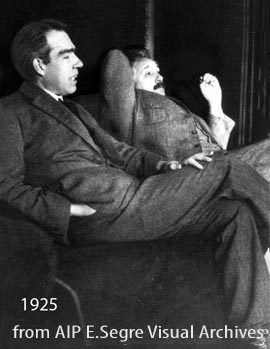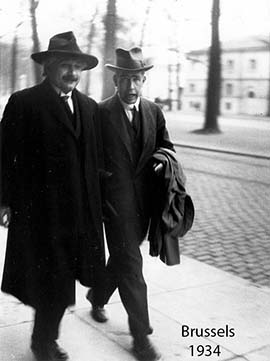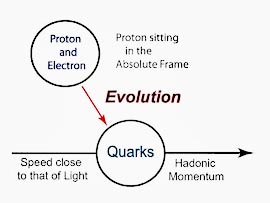Einstein's Cain and Abels
Einstein came to Princeton and settled down there in 1933. He stayed there until 1955.
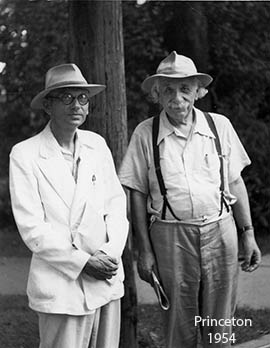
| |
|
- Of course, many people attempted to approach him in order to get
his blessings. In 1954, Werner Heisenberg visited him in order
get Einstein's endorsement of his uncertainty principle.
Click here to read what Heisenberg
wrote after his 1954 meeting with Einstein. To summarize, Heisenberg
was Einstein's Cain. Was Heisenberg a Cain to his Abel? We will come
to this question later on this page.
A more important question is whether Einstein had an Abel or Abels. Before getting into this question, I would like to invite you to the following map. In the morning, Einstein walked from his house to his office at the Institute of Advanced Study. In the afternoon, he walked along the same route from the Institute to his house.

While in Princeton (1933-1955), Einstein seldom talked to anyone. From 1936, his house was at 112 Mercer Street. He walked from his home to his office and from his office to his home along the following route. 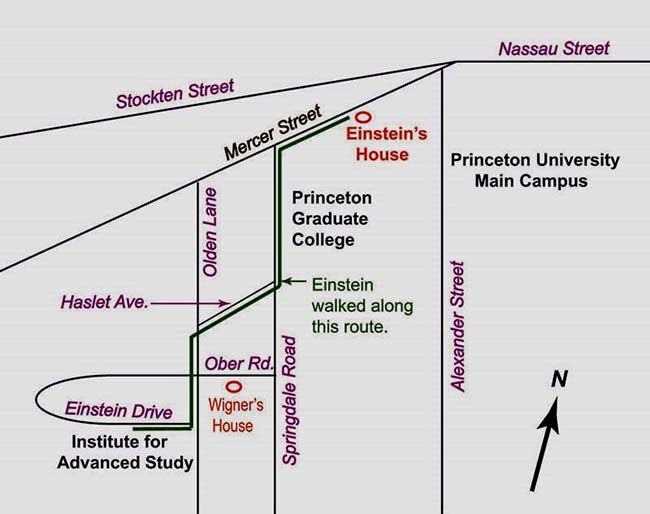
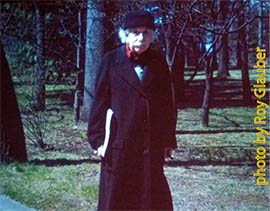
- Who saw Einstein walking along this route? Roy Glauber did. At
conferences, Glauber is quite fond of showing
this color photo of Einstein he took with his camera.
When I was a graduate student there (1958-61), I made three round-trip walks along the Einstein route. One-way distance is about two kilometers. It is a pleasure for me to construct the above map and show it to you. If you have a chance to visit Princeton, you can still have a pleasure of walking along the same route. It is good for your health.
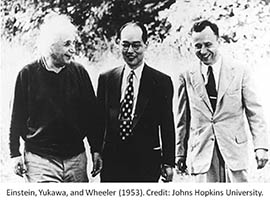
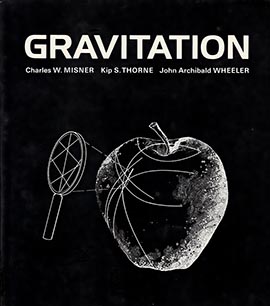
- John A. Wheeler was a professor at Princeton University in 1953 when
Hideki Yukawa visited Princeton. Here is his photo with
Einstein and Yukawa. Since he was in
Princeton, he was able to see Einstein often, and Einstein was happy to
see him.
Wheeler transformed Einstein's ideas of general relativity into a prosperous industry. Before Wheeler, physicists used to regard general relativity as a science fiction. These days, relativity (or gravity) is a well-funded branch of physics making newspaper headlines. If you want to appear as a respected physicist, you must have this book on your book shelf.
You all know what is happening there, and I do not have to explain further. I could tell you however that it took some great men's great efforts to create today's wireless world starting from Maxwell's equations. Click here for a story.
- Most certainly, John A. Wheeler was Einstein's Abel.
In addition to his contribution to Einstein's general relativity, Wheeler made many other contributions.
- In 1942, Richard Feynman received a PhD degree from Princeton. You
all know who his thesis advisor was.
Click here for Feynman's thesis pages thanking his advisor.
- It is said that Wheeler made key contributions to the hydrogen
bomb project. While working on that project, he had a student
named John S. Toll who in 1953 started constructing the Department
of Physics of the University of Maryland. We simply do not know
what they did because it is still secret, and it is not right to
to attempt to find out what they did.
- After completing his book on gravity in 1970, Wheeler became
interested in foundational problems in quantum mechanics, and many
people followed his leads. With Wojcieck Zurek, Wheeler edited
this book. The cover of this book
carries two photos of Bohr and Einstein. These photos were taken
in 1925, after before quantum mechanics and after special relativity
This book indeed carries
many important papers on measurement problems, but it does not
cover Einstein's main interest, namely relativity. It is possible
that Wheeler was aware of this soft spot.
- In 1990, Wheeler's interest was turning toward a different
direction. In invited me to a lunch at Princeton's faculty
dining hall and asked me whether I am interested in finding out what
is happening inside the sun. At that time, I was not able to
understand what he really wanted from me. After many years, I
came to the following assessment of what he wanted me to do.
While he was working on fusion problems connected with the hydrogen bomb project, he must have developed an interest in statistical mechanics of relativistic particles. Statmech of non-relativistic particles is well known. Statmech of massless particles is also well known. How about statistical mechanics between those two extreme cases?
I would like to invite you to the webpage defining this problem. You will also understand why Wheeler asked me to do this. I regret that I was not able to make him happy with my solution to this problem, but I am now interested in solving this problem using my background on massive and massless particles as two limiting cases one Lorentz-covariant entity. This is another Einstein issue.
Here again, Wheeler was Einstein's Abel. I do not know whether Wheeler liked me or not. In either case, he thought I was crazy enough to do physics even though I was not his thesis student. My advisor was Sam Treiman, not Wigner.
In order to thank Wheeler, I maintain a webpage containing my collection of his photos.
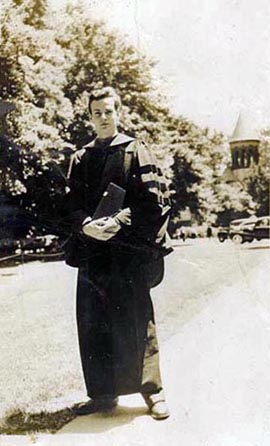
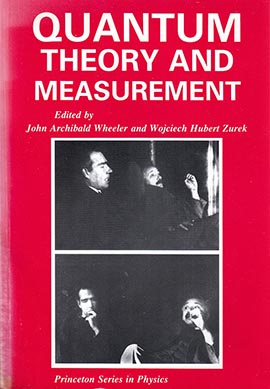
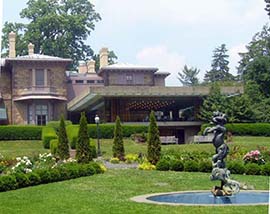
Faculty dining hall at the Prospect Garden of Princeton University - In 1942, Richard Feynman received a PhD degree from Princeton. You
all know who his thesis advisor was.
Click here for Feynman's thesis pages thanking his advisor.
- In 1953, Hideki Yukawa visited Einstein at the Institute for
Advanced Study. They had
this photo. They appear to be very happy.
Then, what did Yukawa tell Einstein? I do not know since I was not there, but it is not difficult to guess what happened from Yukawa's 1953 letter published in the Physical Review. The title of the paper is Structure and Mass Spectrum of Elementary Particles II. Oscillator Model. Yukawa thus must have talked about what he wrote in this paper.
- Yukawa in this paper mentioned Max Born's reciprocity principle.
The Lorentz transformation applicable to space-time coordinates
was formulated before Einstein by Lorentz and Poincaré
before Einstein. It was Einstein who formulated the same transformation
law for the momentum-energy variables. In so doing, he came up
with his E = mc2.
Max Born then generalized what Einstein did into his principle of reciprocity. The fundamental physical law takes the same mathematical form both in the space-time and momentum-energy spaces.
- Yukawa then noted that the fundamental wave equation should take the same form in both the space-time and momentum-energy spaces. Thus, the physics should start from the Lorentz-invariant harmonic oscillator equation.
Presumably, Einstein was aware of Born's reciprocity relation, but a more interesting subject for him was the wave function which can be Lorentz-transformed. Why?
Einstein met Bohr whenever they needed each other. Einstein's main interest was how things look to moving observers, while Bohr's interest was in electron orbits in the hydrogen atom. Before quantum mechanics, they must have talked about the Lorentz deformation of the form
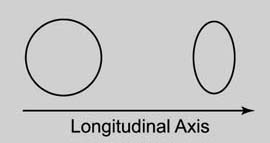
- Yukawa in this paper mentioned Max Born's reciprocity principle.
The Lorentz transformation applicable to space-time coordinates
was formulated before Einstein by Lorentz and Poincaré
before Einstein. It was Einstein who formulated the same transformation
law for the momentum-energy variables. In so doing, he came up
with his E = mc2.
- After 1927, the orbit was replaced by a standing wave. Although
Einstein was against Heisenberg's interpretation of quantum mechanics,
he could not have been against the wave-particle duality. He got
his Nobel prize for the photo-electric effect which is the backbone
of the duality.
- They must have worried about how the standing wave looks to
a moving observer.
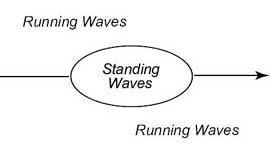
Click here for a further graphic interpretation of this problem. It requires a set of papers written by Dirac, Wigner, and Feynman to give a full interpretation of those figure, we need this set of papers by Dirac, Feynman, and Wigner. It was not possible for Einstein and Bohr to study those papers. It was the job of younger physicists.
- Physics is an experimental science. When Bohr and Einstein
talked to each other, the hydrogen atom
moving with a relativistic speed was unthinkable. This is still
impossible, but there are these days many protons moving with
a speed close to that of light. On the other hand, does
the same quantum mechanic apply to the proton.
Click here for the evolution of the
hydrogen atom.
- I am not the first one to see this gap between Bohr and Einstein.
Indeed, Dirac, Wigner, and Feynman made major contributions toward
understanding this problem. I have been assembling their works
since 1970, after hearing
Feynman's talk given at the 1970 APS meeting in Washington, DC
in U.S.A. In 1971, he published this talk with his students in
the
Physical Review.
The most important aspect of this paper is to note that the observed hadronic mass spectra in the quark model are consistent with those predicted from the three-dimensional harmonic oscillator. However, this paper did not refer to the above-mentioned paper by Yukawa entitled
Structure and Mass Spectrum of Elementary Particles II. Oscillator Model.
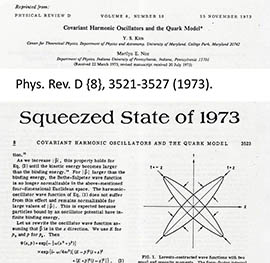
- Feynman's 1971 paper has many other problems, and I invested a
substantial portion of my research efforts to fix them up. Among
others, I was able to replace their meaningless wave functions by
the oscillator wave functions from Wigner's O(3)-like little
group which dictates the internal space-time symmetry of the massive
particle in the Lorentz-covariant world. For details,
you may click here for the paper I published on this subject
in 1979 with Noz and Oh.
I published my first paper on this subject in 1973 with Marilyn Noz, which contains this figure for Lorentz-squeezed wave functions. This is thus my first paper on squeezed states.
- Click here for more about Yukawa.
Y. S. Kim (2014.11.21)
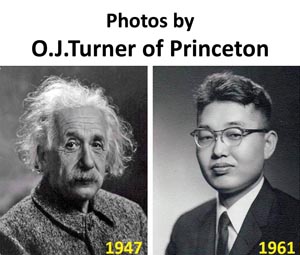
| |
|
- Click here
for his home page.
- His Einstein page.
- His style page.



